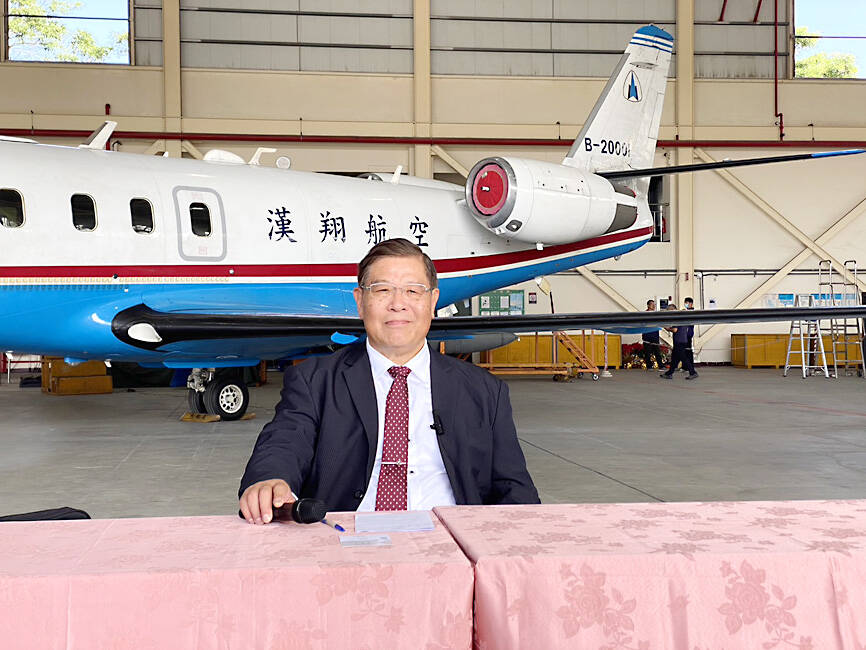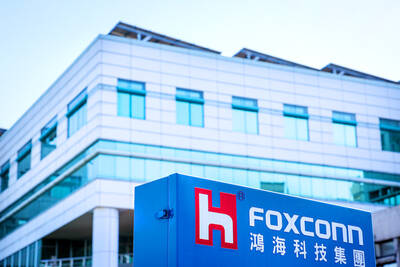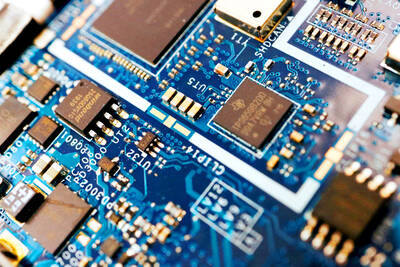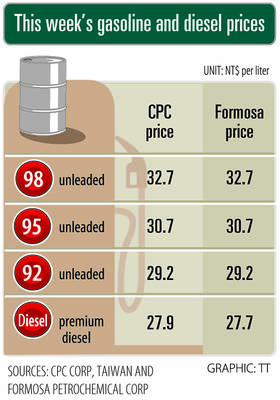Aerospace Industrial Development Corp (AIDC, 漢翔航空) yesterday said it has finished upgrading the air force’s F-16A/B jets to F-16Vs and hopes the experience will help it secure F-16 aircraft maintenance, repair and overhaul (MRO) business.
The retrofitting program has seen AIDC help upgrade 139 F-16A/Bs into more advanced F-16Vs since 2017, with the last jet completing its test flight early this month, the defense contractor said.
“AIDC will continue to utilize the capability of its F-16 Maintenance Center to win business concerning newly purchased F16Vs, as well as F-16 MRO and lifespan extension services,” the company said in a document released following its earnings conference.

Photo: Wang Yi-hung, Taipei Times
The Taichung-based firm said it also expects to complete delivery of 66 advanced jet trainers by the end of 2026, after the last four of 17 indigenous advanced jet trainers scheduled for this year flew from Taichung to the air force base in Taitung County on Tuesday last week.
With the increased number of deliveries of advanced jet trainers, AIDC is gearing up for related maintenance and proposing one-stop services, including military aircraft research and development, jet production and MRO services, the company said.
As the global aviation industry is on track for a full recovery, AIDC said it is optimistic about next year’s outlook.
Going forward, the company would expand its business in the fields of defense (such as performance upgrades and drones), commercial (concentrating on fuselage, door and engine-related business) and technology services (focusing on carbon reduction business and energy management system and building management system technologies), it said.
Since its establishment in 1969, AIDC has participated in several military projects such as producing indigenous defense fighter jets and advanced jet trainers; offering F-16 performance upgrades and maintenance services; and providing maintenance services for various aircraft such as UH-60 Black Hawk helicopters and C-130 transport planes.
The firm reported consolidated revenue of NT$35.8 billion (US$1.14 billion) in the first 11 months of this year, an increase of 31.97 percent from a year earlier.
Net profit in the first three quarters totaled NT$1.96 billion, up 42.53 percent year-on-year and surpassing the total for the whole of last year, with earnings per share of NT$2.08, company data showed.
As the commercial aerospace industry is forecast to see a substantial recovery next year after labor and component shortages are alleviated, the commercial business will become AIDC’s main growth driver going forward, Capital Investment Management Corp (群益投顧) said in a note.
While the firm's sales and earnings from defense business will soon plateau, it will continue to benefit from the increase in the nation's defense spending as Taiwan aims to strengthen its military's combat capabilities, Capital Investment said.

Hon Hai Precision Industry Co (鴻海精密) yesterday said that its research institute has launched its first advanced artificial intelligence (AI) large language model (LLM) using traditional Chinese, with technology assistance from Nvidia Corp. Hon Hai, also known as Foxconn Technology Group (富士康科技集團), said the LLM, FoxBrain, is expected to improve its data analysis capabilities for smart manufacturing, and electric vehicle and smart city development. An LLM is a type of AI trained on vast amounts of text data and uses deep learning techniques, particularly neural networks, to process and generate language. They are essential for building and improving AI-powered servers. Nvidia provided assistance

DOMESTIC SUPPLY: The probe comes as Donald Trump has called for the repeal of the US$52.7 billion CHIPS and Science Act, which the US Congress passed in 2022 The Office of the US Trade Representative is to hold a hearing tomorrow into older Chinese-made “legacy” semiconductors that could heap more US tariffs on chips from China that power everyday goods from cars to washing machines to telecoms equipment. The probe, which began during former US president Joe Biden’s tenure in December last year, aims to protect US and other semiconductor producers from China’s massive state-driven buildup of domestic chip supply. A 50 percent US tariff on Chinese semiconductors began on Jan. 1. Legacy chips use older manufacturing processes introduced more than a decade ago and are often far simpler than

STILL HOPEFUL: Delayed payment of NT$5.35 billion from an Indian server client sent its earnings plunging last year, but the firm expects a gradual pickup ahead Asustek Computer Inc (華碩), the world’s No. 5 PC vendor, yesterday reported an 87 percent slump in net profit for last year, dragged by a massive overdue payment from an Indian cloud service provider. The Indian customer has delayed payment totaling NT$5.35 billion (US$162.7 million), Asustek chief financial officer Nick Wu (吳長榮) told an online earnings conference. Asustek shipped servers to India between April and June last year. The customer told Asustek that it is launching multiple fundraising projects and expected to repay the debt in the short term, Wu said. The Indian customer accounted for less than 10 percent to Asustek’s

Gasoline and diesel prices this week are to decrease NT$0.5 and NT$1 per liter respectively as international crude prices continued to fall last week, CPC Corp, Taiwan (CPC, 台灣中油) and Formosa Petrochemical Corp (台塑石化) said yesterday. Effective today, gasoline prices at CPC and Formosa stations are to decrease to NT$29.2, NT$30.7 and NT$32.7 per liter for 92, 95 and 98-octane unleaded gasoline respectively, while premium diesel is to cost NT$27.9 per liter at CPC stations and NT$27.7 at Formosa pumps, the companies said in separate statements. Global crude oil prices dropped last week after the eight OPEC+ members said they would